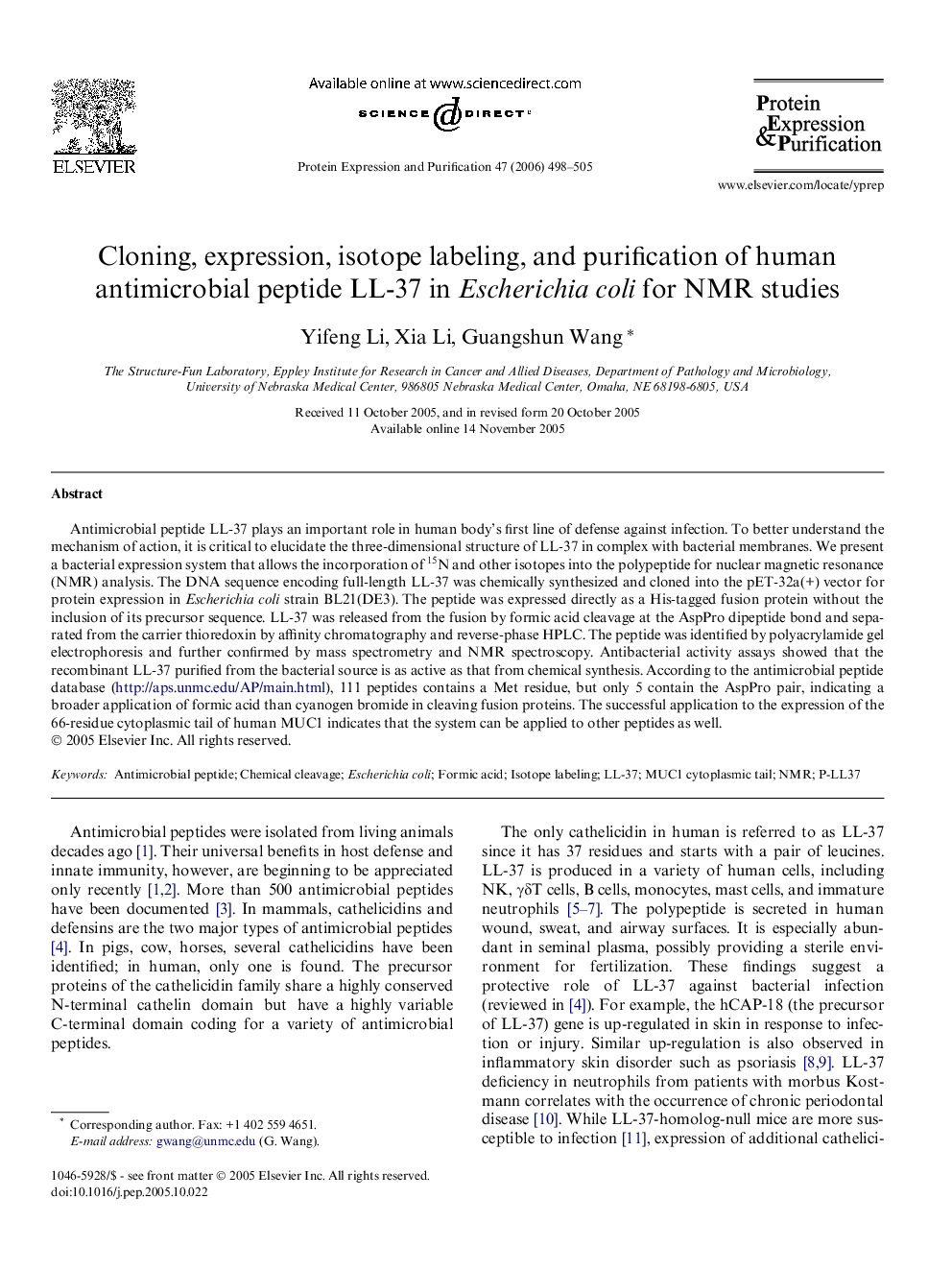| Article ID | Journal | Published Year | Pages | File Type |
|---|---|---|---|---|
| 2021694 | Protein Expression and Purification | 2006 | 8 Pages |
Antimicrobial peptide LL-37 plays an important role in human body’s first line of defense against infection. To better understand the mechanism of action, it is critical to elucidate the three-dimensional structure of LL-37 in complex with bacterial membranes. We present a bacterial expression system that allows the incorporation of 15N and other isotopes into the polypeptide for nuclear magnetic resonance (NMR) analysis. The DNA sequence encoding full-length LL-37 was chemically synthesized and cloned into the pET-32a(+) vector for protein expression in Escherichia coli strain BL21(DE3). The peptide was expressed directly as a His-tagged fusion protein without the inclusion of its precursor sequence. LL-37 was released from the fusion by formic acid cleavage at the AspPro dipeptide bond and separated from the carrier thioredoxin by affinity chromatography and reverse-phase HPLC. The peptide was identified by polyacrylamide gel electrophoresis and further confirmed by mass spectrometry and NMR spectroscopy. Antibacterial activity assays showed that the recombinant LL-37 purified from the bacterial source is as active as that from chemical synthesis. According to the antimicrobial peptide database (http://aps.unmc.edu/AP/main.html), 111 peptides contain a Met residue, but only 5 contain the AspPro pair, indicating a broader application of formic acid than cyanogen bromide in cleaving fusion proteins. The successful application to the expression of the 66-residue cytoplasmic tail of human MUC1 indicates that the system can be applied to other peptides as well.
